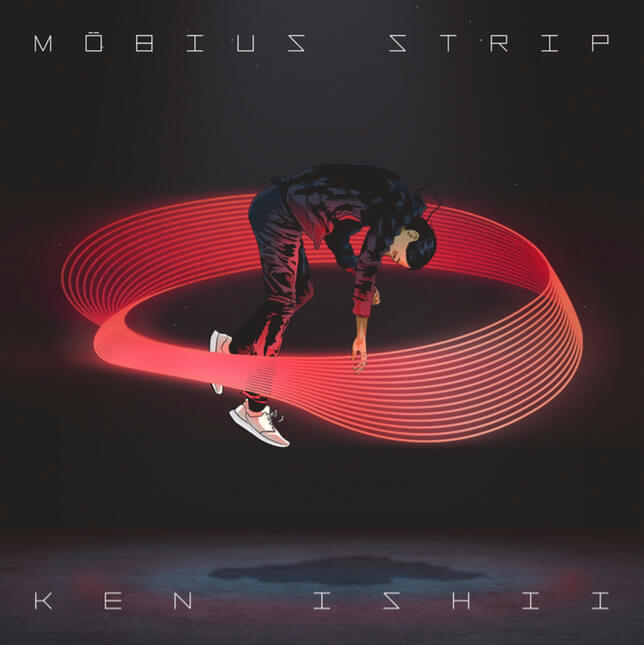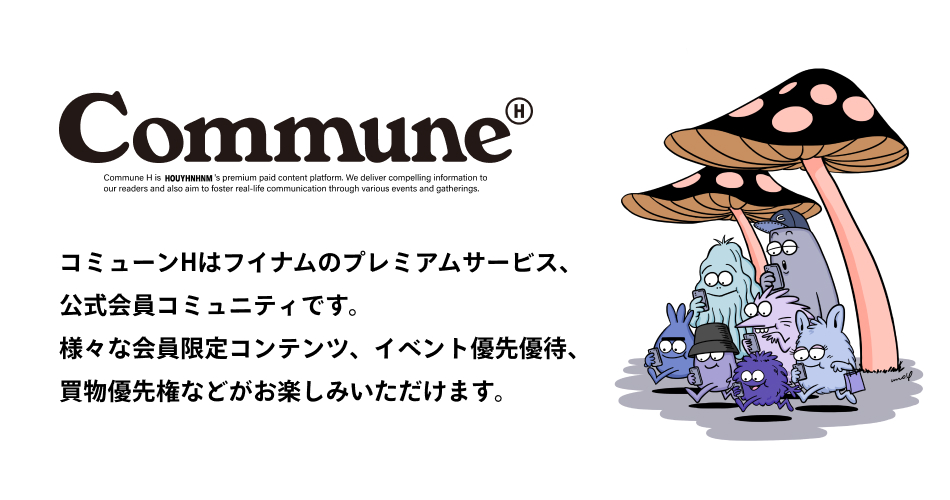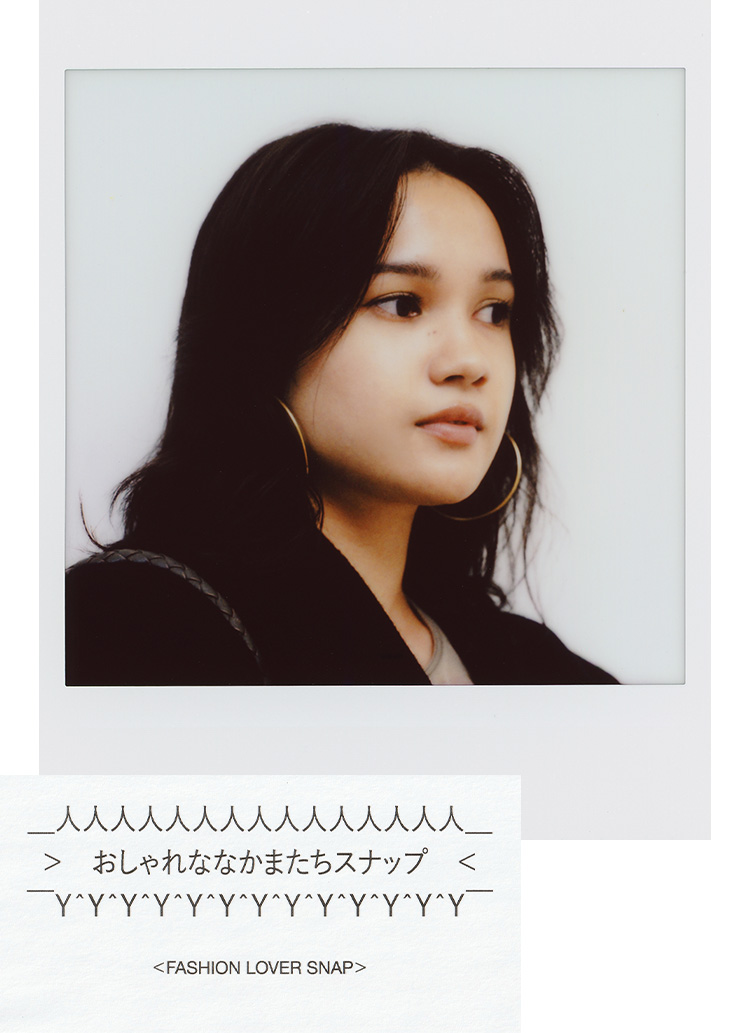Good music is born by chance.
Mihara:KenKen's first album, which we talked about earlier, is just like that, isn't it?

KEN ISHII:That's right. I just bought the "best-selling" recordings at the music store because they recommended them to me. At the time, I didn't have any information, so I didn't know how to write songs, so I just bought it and tried to make it work. When I tried it, it was totally different from what I had imagined (laughs). (Laughs.) But I kept playing with it, and gradually I started to create songs.
Did you send the finished product to R&S Records, a prestigious Belgian label?
KEN ISHII:Yes, I did. I sent them a cassette, and they responded that they liked it. We exchanged letters a few times, and then released it. R&S" has some big name artists, but it also puts out sharp works, and Detroiters are also releasing music, so I thought it was really good.
Mihara:I also loved "Inner Elements (R&S Records / 1994)". The composition was really weird (laughs).
KEN ISHII:Basically, I created without any calculations. No one taught me what to do, so I had no choice but to make what I wanted to make.
You didn't even think about making them dance?
KEN ISHII:At first, I didn't have any idea. I was still a student at the time, and I was just making music. I was still a student at the time, and I was just making music. You were also making music back then, weren't you, Mihara?
Mihara:I think I was around 21 years old. (I had a Q-80 (from Kawai) and was making it, but I decided to stop. That was because Kenken came along. He was a genius, really!
All:LOL!

Mihara:They were really going their own way, and were influencing many artists, such as Future Sound of London, who were there at the time.
KEN ISHII:I also remember Mihara-kun telling me that he was going to quit music. Then he said, "I'm going to go into shoes.
Mihara:I didn't think I could win anymore. I liked deep sounds rather than dance music, and I was listening to Tangerine Dream and other music that was a mixture of old movie music and progressive music. But on the other hand, I also thought dance music like techno was cool. I also have and use Roland equipment.
KEN ISHII:That equipment was suitable for dance music, wasn't it? At that time, we were doing things in a primitive way, connecting equipment one by one with cables, weren't we? That was fun. Now we can use a single computer as software, and recently there is a hardware boom again.
Mihara:Heh, I see.

KEN ISHII:And it's compact and has better performance. It's fun to touch such equipment and hear the sound! The younger generation is seeing this as a new sensation. It is fresh in the eyes of the younger generation, and our own generation is reaffirming the advantages of such equipment.
Basically, I use software to create music, but when I want to accentuate my music, I buy a new weird noise machine and try it out. I also use a sequencer, which can only make simple loops, but sometimes it makes unpredictable loops, which is interesting. So, as with the earlier story about bugs, good music is born by chance.
Mihara:KenKen's rhythms have a strange groove to them. It's like a strange groove that comes from step recording rather than real-time recording.
You mean editorial typing, not improvisation.
KEN ISHII:That's right. I can't play an instrument to begin with, so I am able to play music because the genre of techno was born. I can do this even if I cannot play an instrument. Nowadays, we can visualize sounds with waveforms on a computer screen, but back then, we only had a very analog screen.
Mihara:As I mentioned earlier, the composition of the songs was totally different from other artists. Techno songs start with a four-beat rhythm for DJs to mix easily, and then they gradually add more and more stuff to it. But KenKen's songs were not like that.

KEN ISHII:At the time, I wasn't thinking about the listeners at all. I didn't care about what I wanted them to hear. So I didn't read reviews, and I didn't care whether they were good or bad. But gradually, as I had more and more opportunities to appear in front of people, I became more conscious of it. I guess that's what makes me human (laughs).
Mihara:It is true that when you have tens of thousands of people dancing, you have to think about a lot of things.
KEN ISHII:When you go to festivals and such, it's normal to want to liven things up more than other artists. One time when I was invited to an event as a DJ, I felt like I wanted to liven up the floor. That's how I created the song that became the prototype for "EXTRA. In a sense, that was the first time I was conscious of the listeners.
Mihara:There is an "EXTRA"-like song in "Inner Elements", isn't there?
KEN ISHII:You remember it well!
Mihara:Because I was listening to it so much.
KEN ISHII:Yes, I made "EXTRA" sampling from that song. I liked the sound of that song.
Mihara:At that time, there was no concept of "Japanese-ness" in techno, but when I heard "EXTRA," I thought it sounded a bit festive or Japanese. Even before that, I felt that they were not imitating foreign countries. There were no other artists who had that kind of sound. It was experimental, but the rhythms were solid, and it was proper dance music. The music video was also amazing with its animation. Was that made by Mr. Otomo of "AKIRA"?
KEN ISHII:A guy named Koji Morimoto who worked with Otomo.
Mihara:It was refreshing to see an anime music video, wasn't it? And, you know, there are countries that have banned this kind of music videos, right? There was a scene where a child was playing what is now called VR and killing people in that world. It was a foretaste of today's world.
KEN ISHII:In most European countries, you couldn't watch it until after 25:00 midnight. The U.S. was completely off limits, and for some reason, Asia was the only place where everything was OK. But MTV was at its peak at the time, so we wanted to show it in the US. So I made an American version, replacing only the inappropriate parts.
You won the "MTV DANCE VIDEO OF THE YEAR" in the UK with this music video in 1996.
KEN ISHII:Yes, even though it was only played in the middle of the night in England. It was such a big award that Prodigy and Chemical Brothers won it the year after me, and I was very happy when I got it.
Mihara:Nowadays there are lots of Youtube and social networking sites, but back then there were none. It was amazing that the video won an award even though it was banned in some countries. The footage was a bit shocking. There is a scene where a child shoots a person with a gun, and it is grotesque. But there were a lot of artists who were influenced by this work, weren't there? The chaotic atmosphere of Tokyo at night and the view of the world between reality and unreality.

KEN ISHII:That too was the result of leaving everything to me. But even now, people often say, "That work was great. There is a large graphic on a river in Budapest with my face in "EXTRA" drawn on it. The artist who drew that work contacted me and said, "I was influenced by that work. He was Hungarian.
Mihara:I'm still a techno god.
KEN ISHII:But I had only played once in Hungary. But he contacted me and showed me his other works, which were so good that I asked him to do the artwork for my new album. So I guess I had an influence on him. This is a later story, but the Wachowski Sisters, who worked on the "Matrix" movie, seemed to like you a lot, and they saw "EXTRA" as well. That's how "The Animatrix" came about.










